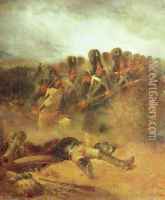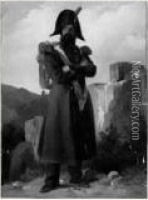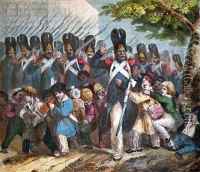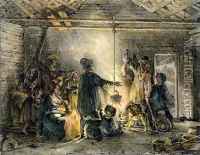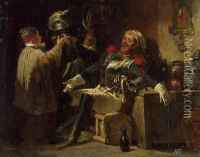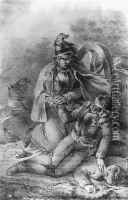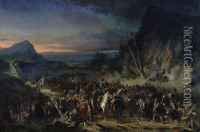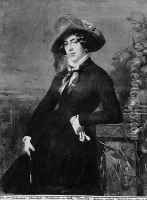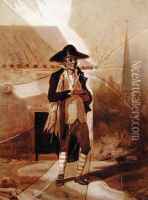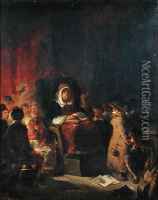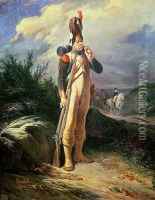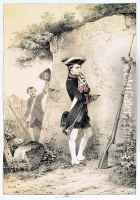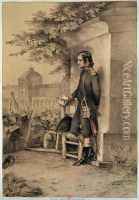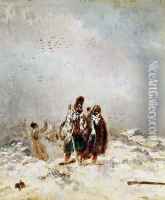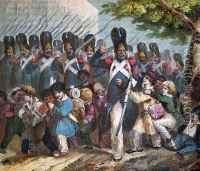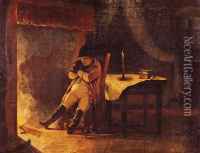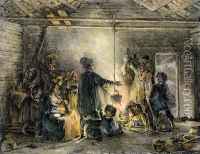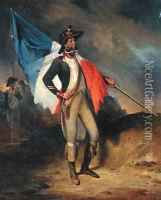Nicolas Toussaint Charlet Paintings
Nicolas Toussaint Charlet, born on December 20, 1792, in Paris, was a French painter and printmaker, known primarily for his depictions of the Napoleonic wars and his military subjects. Charlet grew up in a time when France was undergoing significant social and political changes, which had a profound impact on his life and work.
Charlet's father was an ex-soldier who served during the revolutionary wars, which influenced Charlet's fascination with military life. Although he initially trained to be a draper like his father, Charlet was drawn to art from an early age. He studied under the French painter Anne-Louis Girodet and later received guidance from the famous Jacques-Louis David. Despite this training, Charlet never received formal admission to the École des Beaux-Arts.
His career began with a focus on illustrating books and creating lithographs, but he gradually moved towards painting. Charlet became known for his ability to capture the human aspect of warfare rather than glorifying battle itself. His works often depicted the daily lives of soldiers, their interactions, and the realities they faced. He was particularly sympathetic to the plight of the common soldier, and this empathy was reflected in his artwork.
Charlet's style was characterized by a sense of realism and attention to detail, though he also embraced elements of Romanticism, which was prevalent during his lifetime. He was adept at conveying emotion and storytelling through his art, making his works popular among the public. His illustrations and prints contributed significantly to the public's perception of soldiers and the Napoleonic era.
During his career, Charlet produced over 2,000 drawings and prints, alongside numerous paintings. His contributions to French art were recognized by his contemporaries, and he was awarded the Légion d'Honneur in 1838.
Nicolas Toussaint Charlet's work remains significant as it provides historical insights into the French military life of the early 19th century and the romanticized view of the Napoleonic wars. He passed away on October 30, 1845, in Paris, but left behind a legacy that has continued to influence artists and historians alike.
